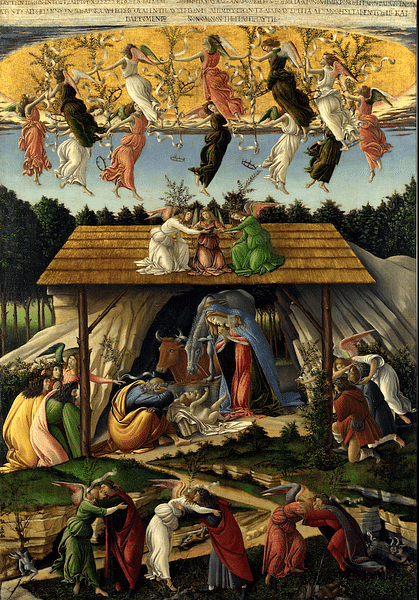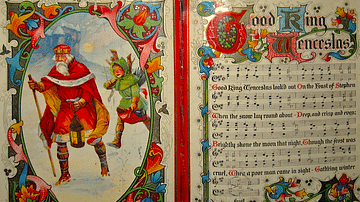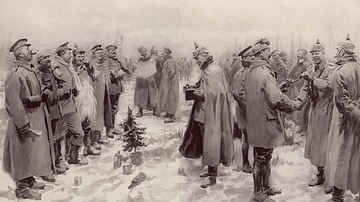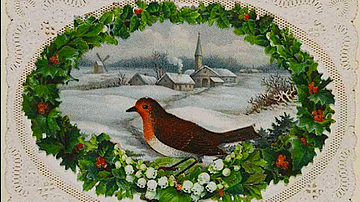The nativity of Jesus of Nazareth is told in the gospels of Matthew and Luke. In Christian theology, the existence of two nativity stories by two different writers provided a prooftext for the historicity of the event. However, the two versions differ in detail. Matthew has the star and the magi, while Luke has the stable and the angels in the field. The story of the birth of Jesus Christ is celebrated by Christians in the holiday of Christmas.
The different stories reflect two different portraits and functions of Jesus. The nativity stories at the beginning continue to influence the activity of Jesus and his purpose in the ministry of each.There is no nativity story in the earliest gospel, Mark (c. 70 CE). Mark began in medias res, with the adult Jesus beginning his ministry in Nazareth:
On the Sabbath he began to teach in the synagogue, and many who heard him were astounded. "Is not this the carpenter, the son of Mary and brother of James and Joses [Joseph] and Judas and Simon, and are not his sisters here with us?" And they took offense at him.
(Mark 6:2-3)
Early Christianity understood the siblings to be born after the birth of Jesus.
The prophets of Israel had predicted that God would raise up a messiah ("anointed one") from the family of King David, who would then usher in God's kingdom on earth. Jesus had announced the imminence of the kingdom of God in his ministry, but the decades passed, and the kingdom was not manifest. The most likely reason for the nativity stories was to convince others that despite the delay of the kingdom, Jesus was nevertheless the promised messiah of the prophets. Both Matthew and Luke consistently included references to the prophets.
Nazareth or Bethlehem?
An initial problem in the early sources was the absence of specific details in the books of the prophets concerning this predicted messiah. Because of the plethora of common names, individuals were often described with the name of their town or city. Mark was the first to write, "Jesus came from Nazareth of Galilee" (Mark 1:9). He was not known as "Jesus of Bethlehem."
Although an ancient settlement has been found, Nazareth did not become sizeable or any importance until the later Hellenistic period and beyond and so was not mentioned by the prophets. But one prophet, Micah, wrote:
But you, O Bethlehem of Ephrathah, who are one of the little clans of Judah, from you shall come forth for me one who is to rule in Israel, whose origin is from of old, from ancient days. Therefore he shall give them up until the time when she who is in labor has brought forth; then the rest of his kindred shall return to the people of Israel.
(Micah 5:1-3)
Because of his anointing by the prophet Samuel (1 Samuel 16), and his later activity there, Bethlehem was known as "the city of David" (Luke 2:11). This is why both Matthew and Luke place Jesus' birth in Bethlehem.
Matthew opened with a genealogy of Jesus (mirroring Genesis), beginning with the founding ancestor Abraham. Luke reversed the order by beginning with Jesus and taking it back to Adam. The purpose of the genealogies was to demonstrate that Jesus had the necessary ancestral tradition (as a full member of ethnic Israel) as well as literal descent from King David. Both include Joseph in the genealogy.
At the same time, a shared conviction in the ancient world was the assumption that great men had omens and dreams surrounding their birth, and a form of divine intervention or participation. A common way of describing this was a god having either literal sexual intercourse with a human woman or an analogy of being possessed by a god. There were contemporary stories that Augustus' mother had been visited by the god Apollo who impregnated her.
The New Moses of Matthew's Gospel
When Moses made his farewell speech to the people, he said that in the future, "The Lord your God will raise up for you a prophet like me from among your own people; you shall heed such a prophet" (Deuteronomy 18:15). Matthew presented Jesus as this "new Moses" by consistently alluding to Moses traditions in the story in Exodus. Joseph receives all of his information from angels in dreams, recalling the Joseph of Exodus who was a dream-interpreter. Structurally, the gospel has a series of five teaching panels; torah meant "teaching" (the teaching of Moses), reflecting the tradition that the first five books of the Scriptures were written by Moses. Many of Jesus's teachings take place on a mountaintop where the subject is the Law of Moses (symbolic of Mt. Sinai).
Matthew's story of the birth takes place offstage, with few details:
Now the birth of Jesus the messiah took place in this way. When his mother Mary had been engaged to Joseph, but before they lived together, she was found to be pregnant from the holy spirit. Her husband Joseph, being a righteous man and unwilling to expose her to public disgrace, planned to divorce her quietly. But just when he had resolved to do this, an angel of the Lord appeared to him in a dream and said, "Joseph, son of David, do not be afraid to take Mary as your wife, for the child conceived in her is from the holy spirit." (Matthew 1:18-20)
Readers are sometimes confused with a reference to divorce, as they were not married yet. Both betrothals and marriages were done through a legal contract. To undo an original contract, another contract, that of divorce, was required.
The "holy spirit" at this level was not the third entity of what became the Trinity after the First Counncil of Nicaea in 325 CE. It was a reference to "the spirit of God," which animated Adam when he "breathed into his nostrils the breath of life, and the man became a living being" (Genesis 2:7).
Matthew continues the nativity story:
All this took place to fulfill what had been spoken by the Lord through the prophet: 'Look, the virgin shall become pregnant and give birth to a son, and they shall name him Emmanuel,' which means, 'God is with us.' When Joseph awoke from sleep, he did as the angel of the Lord commanded him; he took her as his wife but had no marital relations with her until she had given birth to a son, and he named him Jesus. (Matthew 1:22-25)
This passage is famous for translation issues between Hebrew and Greek, which established the virginity of Mary, mother of Jesus. C. 200 BCE, the Hebrew Scriptures were translated into Greek in Alexandria, Egypt. Known as the Septuagint, this is the version of the Scriptures that the gospel writers used. However, it contains several loose translations.
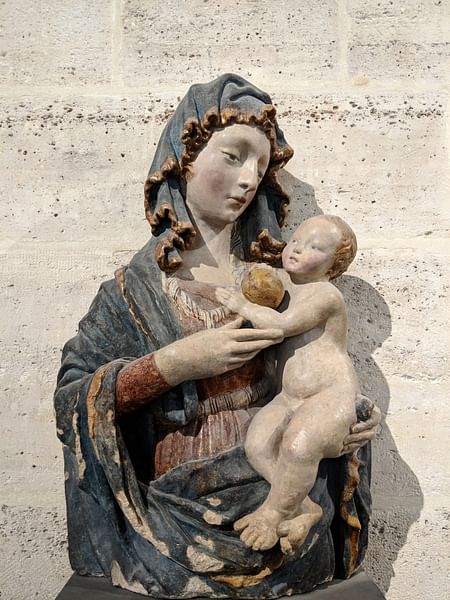
Matthew turned to Isaiah 7. Isaiah was the prophet during the Assyrian conquest in 722 BCE while Ahaz was an evil king of Judah (r. 732-716 BCE). God told him to ask for a sign, but he refused: "Therefore the Lord himself will give you a sign. Look, the young woman is with child and shall bear a son and shall name him Immanuel" (Isaiah 7:14). The Hebrew almah, translated here as "young woman" was a girl who had passed puberty, ready to procreate. In translating this to Greek, almah became parthenos, a "virgin".
"Virgin" did not necessarily relate to an intact hymen, but a general term for an unmarried woman. "Virgin" was a common metaphor for innocence and purity, the state of the young before puberty and adulthood. We have several "virgin goddesses," such as Athena, who choose to rule alone without a consort.
The Magi
In the time of King Herod, after Jesus was born in Bethlehem of Judea, magi from the east came to Jerusalem, asking, "Where is the child who has been born king of the Jews? For we observed his star in the east and have come to pay him homage." (Matthew 2:1-3)
Herod's advisers responded with the same quote from Micah. Herod told them to report back to him if they found the child. The magi were court astronomers (not kings, despite the Christmas carol) throughout the East, but magi was the Persian name (meaning "powerful"). As expert astrologers, they were perceived as knowing aspects of nature, which could be manipulated. Hence, the later term, "magic," derived from the word, using such knowledge for good or evil.
When they saw that the star had stopped, they were overwhelmed with joy. On entering the house, they saw the child with Mary his mother, and they knelt down and paid him homage. Then, opening their treasure chests, they offered him gifts of gold, frankincense, and myrrh. And having been warned in a dream not to return to Herod, they left for their own country by another road. (Matthew 2:10-12)
The "star" symbolism comes from a line in the book of Numbers, "for out of Jacob a scepter [star] shall arise" (24:17). The gifts of gold, frankincense, and myrrh were only offered to kings, thus anticipating the kingship of Jesus in God's kingdom. They were warned in a dream not to report to Herod. The narrative function of the magi was to demonstrate that Gentiles were the first to recognize "god is with us" in this child (Emmanuel, from Isaih 7), and therefore worthy of worship. At the time of Matthew's gospel, there were most likely more Gentiles in the movement than Jews. The story of the magi confirmed God's inclusion of Gentiles in salvation.
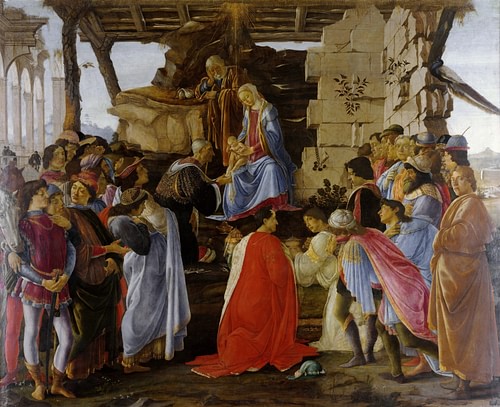
The Slaughter of the Innocents
According to Matthew, Herod ordered the mass murder of all boys two years old and under in the town of Bethlehem. This deliberately aligned the story with Pharaoh in Egypt and his order to kill male babies. Did Herod do this? As the most hated king in Jewish history, surely someone would have made a note of this slaughter. We know more about Herod the Great (r. 37-4 BCE)than any other ancient figure because of a court scribe who wrote of his reign in 20 volumes. We cannot find any contemporary trace that Herod the Great either knew anything about Jesus or that he ordered a massacre. But, 85 years after the death of Herod, Matthew could promote this idea because Herod was famous for killing his own sons, who participated in rebellions against him.
Joseph was warned in a dream to take the family and go to Egypt. While in Egypt, he learned in another dream that Herod was dead. However, Joseph feared living under "a son of Herod", who now ruled Judea. The family moved to Nazareth, fulfilling what Matthew claimed to have been from the Jewish Scriptures, "He will be called a Nazarene" (Matthew 2:23) There is no such prediction by the prophets. Matthew simply ignored the fact that Nazareth was ruled by another son of Herod, Antipas.

Modern astronomers have identified a conjunction of planets that could have produced a "bright star" in the year 6 BCE. The traditional date for Matthew's nativity is thus in the range from 6 BCE to 4 BCE, assuming Jesus was two years old at the time of the alleged Herodian edict, issued just before Herod's death.
The Nativity in Luke's Gospel
The Jewish Scriptures contained many stories of God or an angel, "announcing" the birth of a son to a woman (it is always a son) who will become a great person in Israel and an instrument of God's will:
In the sixth month the angel Gabriel was sent by God to a town in Galilee called Nazareth, to a virgin engaged to a man whose name was Joseph, of the house of David. The virgin's name was Mary. And he came to her and said, "Greetings, favored one! The Lord is with you." But she was much perplexed by his words and pondered what sort of greeting this might be. The angel said to her, "Do not be afraid, Mary, for you have found favor with God. And now, you will conceive in your womb and bear a son, and you will name him Jesus. He will be great and will be called the son of the most high, and the Lord God will give to him the throne of his ancestor David. He will reign over the house of Jacob forever, and of his kingdom there will be no end." ... Then Mary said, "Here am I, the servant of the Lord; let it be with me according to your word."
(Luke 1:26-33; 38)
While Matthew claimed that the family originally lived in Bethlehem in an ordinary house and later moved to Nazareth, Luke used the device of registering for the Roman census to get Joseph and Mary to Bethlehem:
In those days a decree went out from Caesar Augustus that all the world should be registered. This was the first registration and was taken while Quirinius was governor of Syria. All went to their own towns to be registered. Joseph also went from the town of Nazareth in Galilee to Judea, to the city of David called Bethlehem, because he was descended from the house and family of David. He went to be registered with Mary, to whom he was engaged and who was expecting a child. While they were there, the time came for her to deliver her child. And she gave birth to her firstborn son and wrapped him in bands of cloth and laid him in a manger, because there was no place in the guest room.
(Luke 2:1-7)
The Greek term translated as "guest room" here could mean "lodging" or "upper room" ("inn" of the King James version). Way-stations across the Roman Empire had shared, dormlike sleeping quarters on the second floor. The animals were penned up for the night on the first floor. With apparently no room left on the upper floor, the consensus for this passage is that Joseph and Mary bedded down with the animals. Hence, the claim that Jesus was "born in a stable." The "manger" was simply a feeding trough. After the birth, the family simply returned to Nazareth.
Luke's census has been the subject of much debate. We have no contemporary evidence that Augustus (r. 27 BCE to 14 CE) ordered such a decree "that all the world should be registered." And if everyone in the Empire had had to quit their farms and jobs and go back to the town where they were born, the economic upheaval would have been incredible.
But some sense of credibility relates to Luke's mention of the governor of Syria, Quirinius. When the Roman Senate appointed a new magistrate in the provinces, a local census was taken both to determine the status of Roman citizenship and to accurately predict the income for the tax rolls. From Jewish and Roman sources, we know that Quirinius was appointed in the year 6 CE. His census resulted in an unsuccessful tax revolt by some Jews, led by Judah the Galilean. One of Luke's purposes in this story may have been to highlight the family of Jesus, not only as pious Jews but as good citizens of Rome.
Taking Matthew and Luke together, the closest we can come to an accurate date of the birth of Jesus runs the gamut of 6 BCE (two years before the death of Herod) to 6 CE.
Luke also portrayed Jesus with elements of the "new Moses," where he has teachings similar to Matthew's in the ministry. But Luke's overall portrait of Jesus and his function was as the humble servant of God, born in humility. In Luke, an angel first announced the birth of Jesus to the shepherds in their fields. Shepherds were only one step above slaves, truly the lowly. There is no story of the magi and kingly gifts. Throughout Luke's gospel and the Acts of the Apostles, Luke argued consistently that Jesus' kingship was not political, not a challenge to Rome.
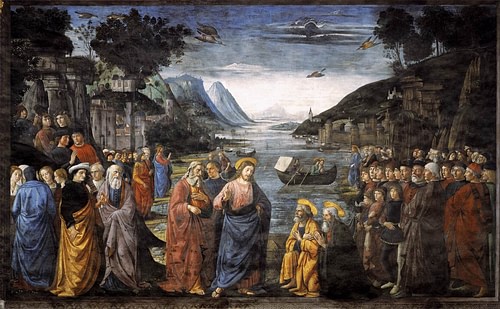
Luke's gospel is noteworthy for a Jesus who has more speeches to the poor, the outcasts of society, and the disabled than any other gospel. Luke uniquely provided additional parables as everyday examples that lead to redemption: the lost sheep, the lost coin, and the Prodigal Son.
In the first centuries of Christianity, the re-enactment of the resurrection (which became the holiday of Easter) was the more important celebration. With Constantine’s conversion to Christianity in 312 CE, he is credited with celebrating Christmas on 25 December by 326. This coincided with a celebration of the sun god, Sol Invictus, and placed it within the week-long holiday of Saturnalia. Historians consistently point out that December was the rainy, winter season in Judea. There was little possibility of observing a star or shepherds being outside at night in the rain.
In 326 CE, Constantine's mother, Helena of Constantinople, went on a pilgrimage to Judea. She claimed visions which told her where to find the sites of Jesus' crucifixion and nativity. Constantine built major basilicas at these sites, the continuing object of Christian pilgrimage. The edifices found today, however, were built over the earlier sites during the Crusader period. Beginning with excavations in the 1880s, pilgrims can tour what has been identified as a first-century house, now known as the House of Mary and Joseph in the city of Nazareth.


